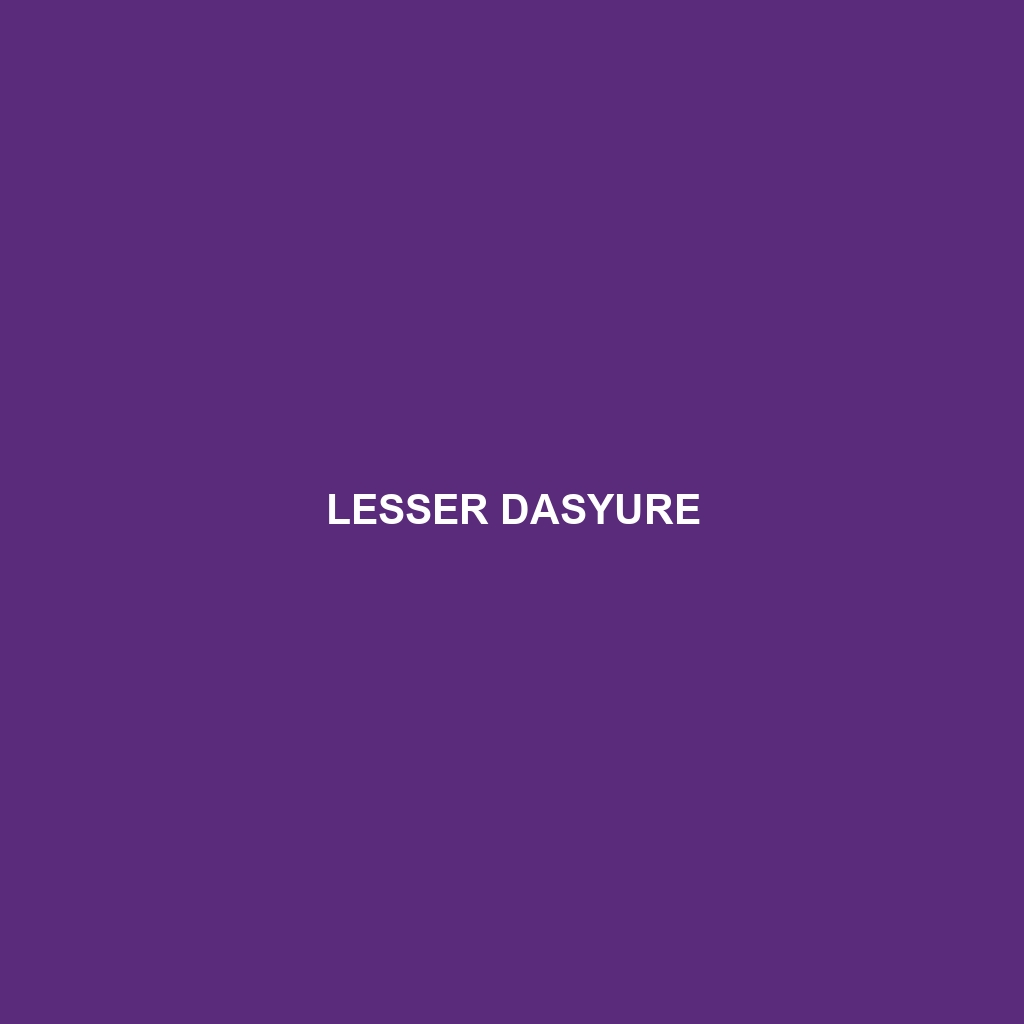Lesser Dasyure (Dasyurus hallucatus)
The Lesser Dasyure, also known as the Northern Quoll, is a small carnivorous marsupial native to Australia. Known for their agility and striking appearance, these nocturnal predators play a crucial role in their ecosystems. Despite their tough nature, Lesser Dasyures face numerous threats that have placed them under the watchful eyes of conservationists.
Physical Characteristics:
Size: Lesser Dasyures are relatively small, with adults typically measuring between 25 to 35 centimeters in body length, and their tails adding an additional 20 to 30 centimeters. They generally weigh between 300 to 1,200 grams, with males being significantly larger than females.
Coloration: Their fur is a distinctive reddish-brown or grey, adorned with numerous white spots scattered across their bodies and tails, which serve as camouflage in their natural habitats.
Special Features: They have sharp teeth and claws, designed for their carnivorous diet, and strong hind limbs that aid in climbing and jumping. Their pointed snouts and large, rounded ears enhance their sensory perception.
Behaviors:
Social Interactions: Lesser Dasyures are generally solitary animals, coming together primarily during the mating season. Males often roam over large territories, while females have smaller, more defined home ranges.
Feeding Habits: They are opportunistic feeders, preying on a variety of insects, small mammals, birds, and even reptiles. Their diet also includes fruits and nectar, showcasing their adaptability.
Ecological Roles: As predators, they help control the populations of their prey species, maintaining a balanced ecosystem. They also contribute to seed dispersal through their consumption of fruits.
Habitats:
Lesser Dasyures inhabit a range of environments including tropical savannas, woodlands, and rocky outcrops. They prefer areas with abundant ground cover and shelter, such as hollow logs, rock crevices, and tree hollows, which provide protection from predators and harsh weather.
Adaptations:
Nocturnal Lifestyle: Being nocturnal helps them avoid the heat of the day and reduces the risk of encountering predators.
Climbing Skills: Their strong limbs and claws make them adept climbers, allowing them to escape predators and access diverse food sources.
Reproductive Strategy: Females give birth to underdeveloped young that continue to grow in a pouch, ensuring higher survival rates in the vulnerable early stages of life.
Conservation Status:
The Lesser Dasyure is currently listed as an Endangered species on the IUCN Red List. Major threats include habitat destruction, competition and predation by invasive species like feral cats and cane toads, and climate change.
Fun Facts:
The Lesser Dasyure has an unusually high metabolism for a marsupial, which requires them to consume up to 20% of their body weight in food each day.
During the breeding season, males exhibit a dramatic increase in their activity levels, often traveling long distances to find mates, which can lead to a significant decrease in their lifespan.
They possess a unique form of communication through a series of vocalizations and scent markings, helping them navigate their solitary lifestyles and breeding behaviors.
In summation, the Lesser Dasyure is a resilient and fascinating species whose presence is vital to the health of Australian ecosystems. Understanding and protecting these remarkable marsupials is essential for ensuring their continued survival.
